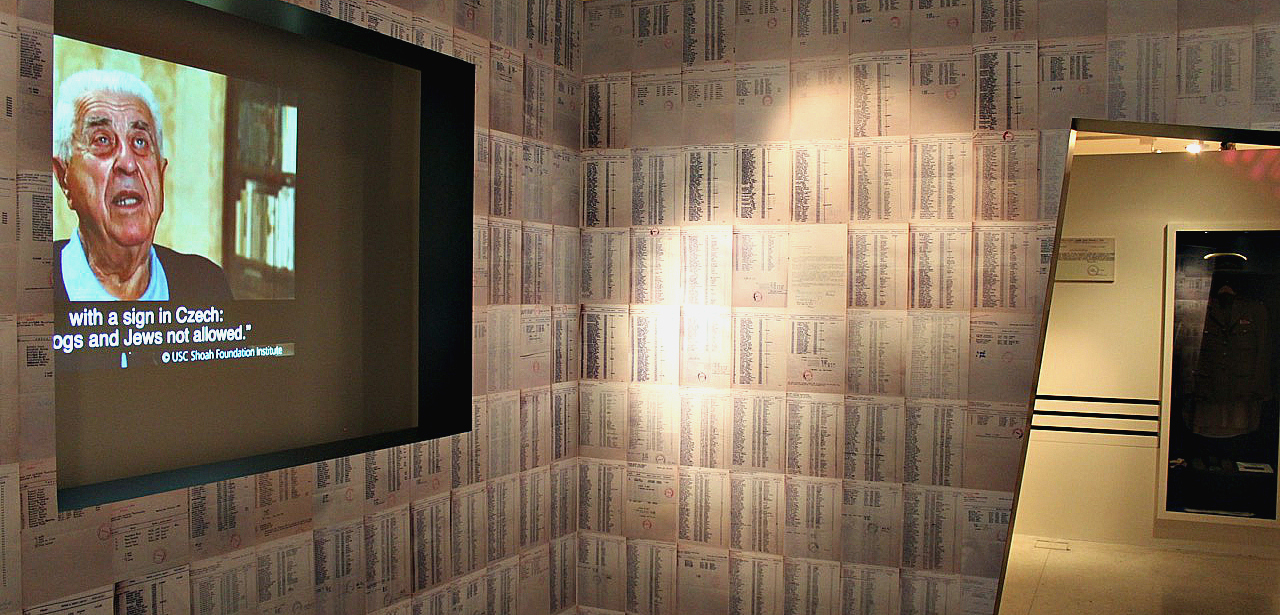Jewish Museum in Prague Uses Testimony in New Exhibit “Shattered Hopes”


By Martin Šmok
USC Shoah Foundation Senior International Training Consultant
After displaying testimonies from the Visual History Archive in its exhibit The Orient in Bohemia this fall, the Jewish Museum in Prague continues utilizing filmed testimony in its latest exhibit: “Shattered Hopes: Postwar Czechoslovakia as a Crossroads of Jewish Life.”
The exhibition draws attention to little-known aspects of the history of the Czech lands in 1945-1953, focusing on the return of concentration camp survivors, the settlement of border areas, and the migration of tens of thousands of Jewish refugees across the country. The exhibit includes two screens with rotating testimony clips from the Visual History Archive, as well as documents and photographs from the archives of the Jewish Museum, with a few 3D authentic objects, archival film, and secretly photographed private letters from the archives of the secret police.
Educational programming will take place while the exhibit will be on display, for six months, at the Educational and Cultural Center of the Jewish Museum.
It is the Jewish Museum's second exhibition to explore the issues of refugees and migration in the 20th century. Czech society had direct experience of encounters with refugees and migrants, many of whom were Jewish – be it refugees from Galicia and Bukovina who were placed in barrack camps during the First World War, refugees from Nazism in the 1930s, or Holocaust survivors after the Second World War.
For the survivors of concentration camps and death marches, the long hoped-for return home after the war was often in no way simple or happy. Europe in 1945 was different from the pre-war world they had known. Borders had changed, entire ethnic groups had been displaced and, in many places, there was a struggle for the character of post-war regimes. Many of the people returning to Czechoslovakia faced incomprehension, hostility and attempts to create an ethnically, linguistically and culturally homogeneous society. Despite this, they did not give up their hopes for a new life. They longed for the return of their loved ones and hoped for a more knowledgeable and better world. Some believed that the problems of the world would be solved by Communism.
Due largely to its geographical position, post-war Czechoslovakia became a crossroads of hope for thousands of homeless Jews who were fleeing mainly from Poland, but also from Romania, Hungary and the Soviet Union. Some wanted to stay, while others hoped to pass through Czechoslovakia to the Western occupation zones in Germany or Austria with dreams of making it to America or Palestine.
The hopes of survivors in a new, more knowledgeable world without racist or ethnic stereotypes were often confronted with bureaucratic inertia and propaganda. Prejudices were too deep-rooted. At the start of the 1950s, anti-Jewish slogans returned in full force to Czechoslovakia – as part of the struggle against Zionism. Anyone who had Jewish ancestors or relatives could be labelled a Zionist, “the most faithful lackey of American imperialism.” The anti-Zionist persecution mainly served the global political goals of the Soviet Empire in the Middle East. The eruption of anti-Jewish hatred after the trials of the so-called anti-state conspiracy centre also took many Communists by surprise. The hopes that Jews had pinned on post-war Czechoslovakia completely faded for several difficult years.